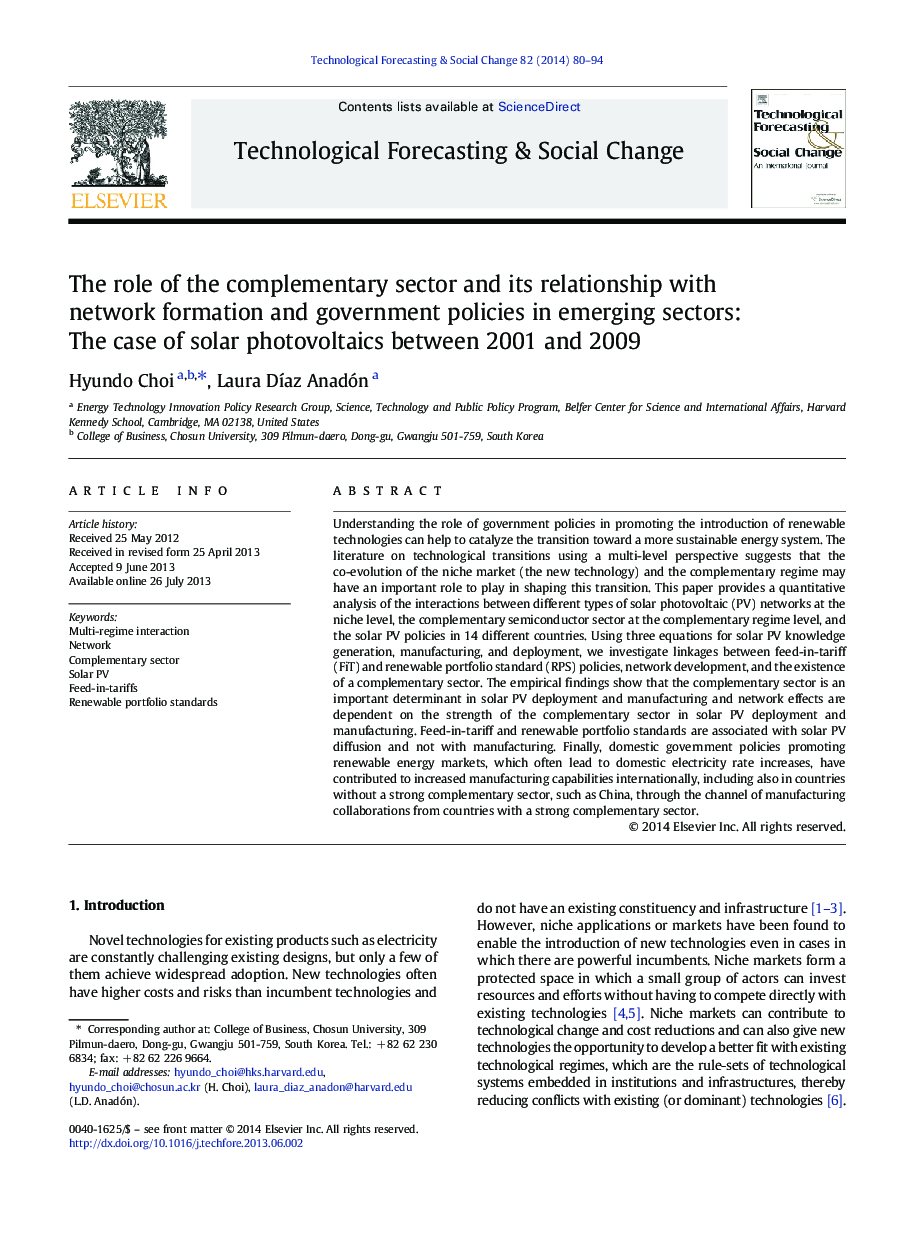| کد مقاله | کد نشریه | سال انتشار | مقاله انگلیسی | نسخه تمام متن |
|---|---|---|---|---|
| 896560 | 1472418 | 2014 | 15 صفحه PDF | دانلود رایگان |
• Quantitative evidence for niche (PV)-complementary regime (semiconductor) interaction.
• Complementary sector associated with PV manufacturing and deployment activities.
• Role of networks depends on the strength of complementary sector.
• PV deployment policies associated with increased diffusion, but not manufacturing.
Understanding the role of government policies in promoting the introduction of renewable technologies can help to catalyze the transition toward a more sustainable energy system. The literature on technological transitions using a multi-level perspective suggests that the co-evolution of the niche market (the new technology) and the complementary regime may have an important role to play in shaping this transition. This paper provides a quantitative analysis of the interactions between different types of solar photovoltaic (PV) networks at the niche level, the complementary semiconductor sector at the complementary regime level, and the solar PV policies in 14 different countries. Using three equations for solar PV knowledge generation, manufacturing, and deployment, we investigate linkages between feed-in-tariff (FiT) and renewable portfolio standard (RPS) policies, network development, and the existence of a complementary sector. The empirical findings show that the complementary sector is an important determinant in solar PV deployment and manufacturing and network effects are dependent on the strength of the complementary sector in solar PV deployment and manufacturing. Feed-in-tariff and renewable portfolio standards are associated with solar PV diffusion and not with manufacturing. Finally, domestic government policies promoting renewable energy markets, which often lead to domestic electricity rate increases, have contributed to increased manufacturing capabilities internationally, including also in countries without a strong complementary sector, such as China, through the channel of manufacturing collaborations from countries with a strong complementary sector.
Journal: Technological Forecasting and Social Change - Volume 82, February 2014, Pages 80–94
